Fable III: A quite literal hands-on
You've heard Molyneux's list of new features a thousand times. But here's how they actually play
But what really matters is how that stuff really makes Fable III play. Is it a genuine evolution for RPG immersion? Or is it just Fable II with a couple of extra gimmicks? We'll tell you that right now. Because yesterday we got to play it and, found out just how Lionhead's new epic compares.
The morality is greyer
Following a good or evil path in Fable II was pretty easy. ‘This quest involves burning orphans!’, it screamed. ‘Do you want to accept this quest?’.
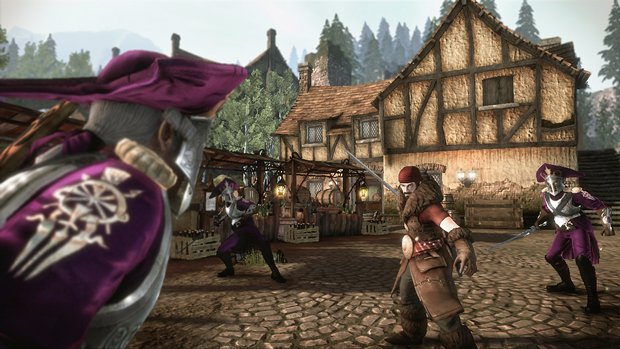
Above: To kill 'em all, or not? Either way, it seems Fable III's judgements will be less black and white
In Fable III though, things seems far less clear cut andmuch more interesting. Take for instance, the early quest we played through. Stumbling upon an unhappily married couple in the midst of a raging domestic, it became rapidly apparent that the wife was suffering an unfortunate personal affliction. Namely an arrogant arse of a husband who was making her life miserable. She askedfor our help ingetting ridof him, and naturally we obliged.
She wanted help in building a case of divorce, and requested that we seduce her husband in order to help break up the relationship. We obliged, and after much dancing, schmoozing, a date and the resulting proposal (romance still works fast in Albion), we had him ditching his grateful wife for a bright, happy, unfortunately-not-actually-going-to-happen romantic future with our evil female heroine. But then he hit upon a new idea. A dead wife is cheaper than a divorced ex, so would we kindlyspeed things along a little by killing her?
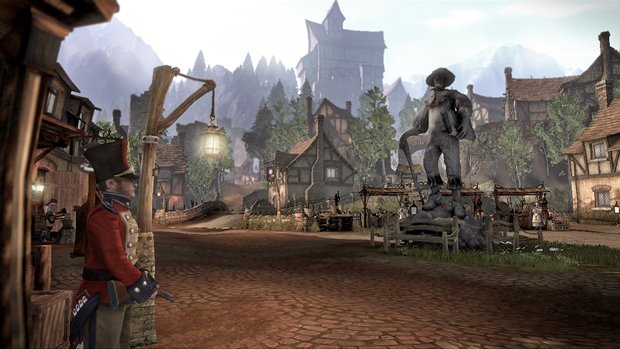
Above: Despite the new industrial revolution era, Albion's rural bits are as beautifully tumbledown as ever
At this point we had the usual good/bad Fable choice; fulfill the request, or just walk away. But that wasn’t a satisfyingset of optionsas far as we were concerned. We didn't want to kill her, and walking away would surely solve nothing after all of our hard work, so we decided to see if there was another way. So we shot the husband instead. It worked. He died. Though his now-widow immediately freaked out and threw us out of the house, proclaiming that we’d gone too far.
Sign up to the GamesRadar+ Newsletter
Weekly digests, tales from the communities you love, and more
But no matter. The quest was complete, and an epilogue screen popped up to tell us that although we’d been a bit harsh, the guy was indeed an arse,and as suchno-one would try to arrest us for his murder. It was a small taste of the moral spider-web Molyneux has talked about in relation to the game’s laterleadership phase, and bodes very well for the high-level ethical compromises he’s discussed.
The interactionsare simpler
So far, Fable III’s gesture system seems heavily stripped back from the one in Fable II. Most noticeably, we could only affect one character at a time with our interactions. Rather than having anyone in earshot react to our farts with revulsion and our dancing with lust (or vice versa), we had to press A near an NPC in order to interact with them.
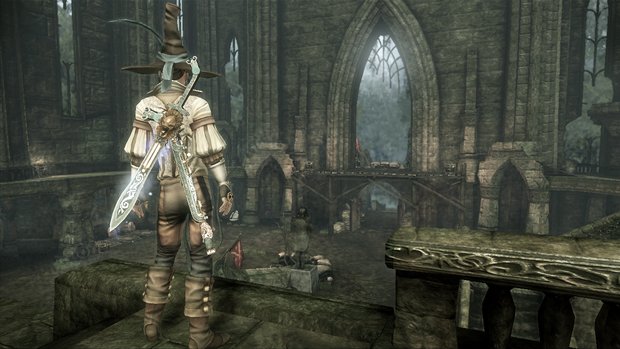
Above: That hat. We want it
We were then locked intoan exchangewith that character alone, and could choose from three expresssion options mapped to the X, B and Y buttons. It’s unclear at the moment whether this selection will expand to Fable II’s full wheel ofreal-timeselection or whether it will be a case of pre-mapping three expressions of your choice at any given time. Or even if everything will be dictated by the game. One thing that's clear though, is that this one-to-one interactionactually feels more powerful and significant than having a whole crowd of randomhangers-onwhoop and cheer at your every action, as in Fable II.There’s a smaller reaction, but more personal impact, especially when you realise that…
Touch really is power
It’s strange how such a small addition can change the whole feel of a game. On paper, your ability to lead characters around by the hand in Fable III (via a quick stab ofthe left trigger)might seem like little more than a glorified replacement for the old ‘Follow’ command. But in practice, it’s incredibly empowering, and completely changes the way your actions make you feel.
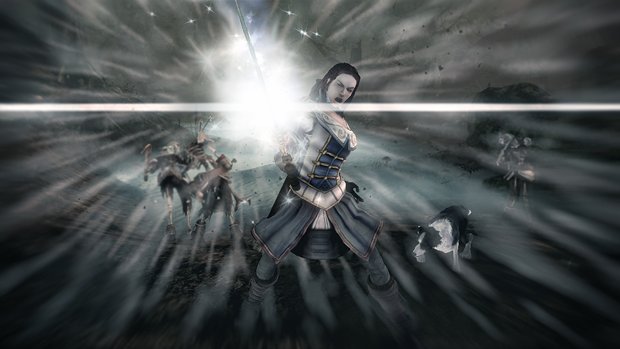
Above: Obviously your touches can be a bit more subtle than this...
Take the fart expression. Fable II’s most iconic action was in truth little more than a throwaway sight-gag, a way of getting a few cheap laughs at the expense of alarge crowd whowerefollowing you. But when performing it upon a specific victim, having picked out a deliberate, singular target, having dragged them right across their village into the town square to do it in front of everyone, and having spent every step of the way listening to their excitable musings on where you might be taking them, the eventual insult is 100% more impacting.
It’s not just Molyneux hyperbole. You genuinely do feel far more responsibility for your actions when you have to physically lead a character in order to carry them out. If you were to say, take an innocent child by the hand, lead them away from home and the desert them, yes, itwould be darkly amusing, but you’d also find yourself feeling far, far creepier than you would have expected. Hypothetically, of course. Not that we did that. Ahem.
Trust us, evil acts are not going to be anywhere near as throwaway this time around.
The characters are more believable
Fable has always been a haven of likeable, funny,lifelike characters, however cartoonish they may be,but Fable III looks to add little tweaks and improvements across the board. Character animations for expressions are now more convincing and full of personality, theemphasis on one-to-one interaction and touch allowing your hero to be more directly involved with NPCs in more overt, more intimate ways. The aforementioned farting, for instance, now ends with you grabbing the hapless villager by the head and pulling their face right downto your enthusiastic gas pipe. Dancing culminates with a showboating Dirty Dancing-style lift of your partner.
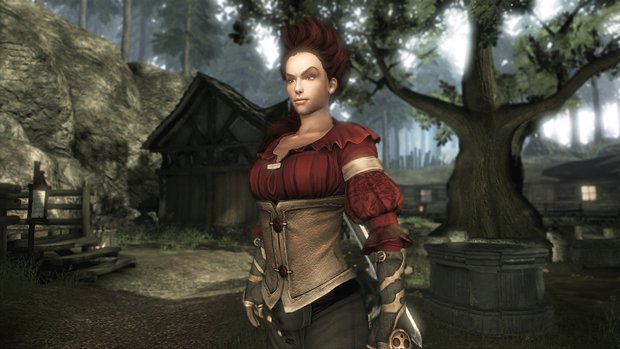
Above: The promise of more realistic female heroes has come good. They're more buxom, less bruiser
And on top of the improved interactions, heroes are now voiced. Obviously this should finally create a sense of actually being involved in the major plot points, unlike in Fable II, which forced you to dumbly stand around like a spare part watching other characters discuss what was going, often seeming to ignoreyour main man (or woman) completely. And simply in terms of basic NPC interaction, the little verbal asides already on show create a sense of real interaction, immediately quashingthefeeling of separation that Fable II could occasionally give you, even when performingto a large crowd.
Chickens seem to be a big deal
Yes, having been cruelly booted around in Fable II, the poultry are back with a vengence. They can still be kicked for fun and profit, but an animated chicken silhouette now takes pride of place on the loading screen, and we even saw a full-blown chicken suit available in another mission. Expect Fable IV to follow the full life-story of a small feathered peasant, from egg to McChicken Sandwich bun.



